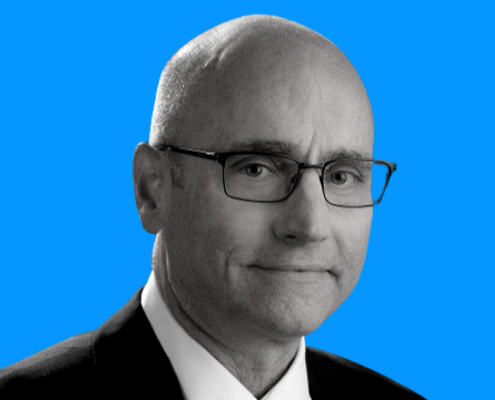For the latest LightBox Spotlight series, Alan Agadoni, the new General Manager of EDR LIGHTBOX®, shares his thoughts on the changes he’s seen in his decades as an environmental consultant, the industry’s reaction to the COVID-19 pandemic, upcoming revisions to the ASTM Phase I ESA standard, and a look ahead at the impacts that technology is expected to have on property risk management.
In June, you spoke on a panel at the Environmental Bankers Association’s virtual summer conference about an industry-wide survey on the impacts that COVID-19 is having on the environmental consulting sector. How are environmental professionals coping with the challenges brought to bear by the pandemic?
Alan Agadoni: The survey results clearly demonstrated the adaptability and resiliency of Environmental Professionals (EPs). They reported many new practices and procedures to prevent the acquisition and transmission of COVID-19 while conducting assessments. Safe travel became more complicated, whether by air or car. Assessors reported driving separately when teaming with others on local site visits. Visual observations of properties were being scheduled for off-hours and in vacant areas to minimize risks. Interviews with site contacts were being conducted online, and some EPs tried virtual tours of buildings.
During the panel discussion at the Summer EBA conference, I highlighted some of the more creative approaches to site observations but cautioned EPs to note any data gaps, physical limitations, and other deviations to the ASTM Standard Practice in their reports as required. I also stressed the importance of carefully implementing safety measures and managing the extra cost and time associated with the new procedures. We are about to launch an update of the survey, so it’ll be interesting to see how the industry’s responses have changed over the past five months, as well as how EPs feel about the market in 2021. I’ll be presenting highlights of the survey results on a panel at the January EBA conference.
The ASTM Phase I ESA task group is in the final stages of revising the E 1527 Standard Practice. What are some of the biggest proposed revisions that EPs should be aware of?
Agadoni: The task group has primarily focused on updating and clarifying terms and definitions in the Standard Practice. There are numerous proposed edits, but EPs who are already keeping up with “good and customary commercial standards” will likely find they are in alignment with most of the changes. EPs should be planning to review the final published revisions with staff and consider how the updates might impact their ESA proposals, contracts, workflow, and reports.
Some of the more impactful revisions are associated with historical research, an area of the practice where information can vary greatly from site to site. The committee is debating a proposed revised scope for historical research that would require that historical uses of adjoining properties be identified from first developed use back to 1940, whichever is earlier. Three of the standard historical resources – aerial photographs, fire insurance maps, and topographic maps – are relatively simple to review as-is for data on adjoining property uses. However, researching local street directories (i.e., city directories) for uses of adjoining properties could increase the number of street addresses to be searched. For EPs who are manually researching documents in libraries, this could dramatically increase the time and cost of data retrieval, analysis, and reporting. EDR LIGHTBOX® has been offering adjoining streets in our reports as an option for a long time, but not all EPs were routinely expanding their searches to the surrounding area. It costs more to acquire and review the data, and the research might not yield additional notable findings, but that can be difficult to determine beforehand. The revisions to the Standard Practice may be a challenge for EPs who previously excluded standard resources as not readily accessible or practically reviewable.
As someone who was a consultant for 35 years prior to joining LightBox, what are some of the most significant changes you’ve seen in your career regarding how property risk is assessed and managed?
Agadoni: The birth of the environmental due diligence industry coincided with the availability of affordable personal computers, database software, and printers. Numerous small consultancies formed and capitalized on the power of the PC. Early on, it was rough as hardware was expensive, slow, and lacked memory capacity. The software was buggy and difficult to modify. Sometimes we still had to use typewriters for letters and reports! Property research was limited to visual observations, interviews, and manual searches of government records to the extent you could get access. Agency records were not organized, and few had staff to assist, so we spent a lot of time hunting for relevant data and making copies. It was still many years before we had browser access to the worldwide web. There were no industry standards for environmental due diligence, and real estate professionals, lenders, lawyers but engineers were starting to talk about guidelines for liability avoidance. The development of the ASTM E1527 Standard Practice in the early 1990s was followed by Internet-accessible government agency records. After that, advances that allowed property records to be registered to GIS mapping blew open the doors to what we could do. We have come a long way since then.
Over the next 20 years, we saw a dramatic expansion of our knowledge base, refinement of standards, laws, and regulations, and improvements in the tools of the trade. This has led to tremendous growth, business opportunities, and competition.
In response, we have seen changes associated with increased speed, efficiency, and standardization of work products. EDR®’s thought leadership during that growth phase cannot be overstated. Consultants relied upon EDR® publications and seminars to share ideas and keep on top of frequent industry changes and the latest benchmarks. In time, new business models and practices emerged, including firms specializing in due diligence services and workforce expansion using 1099 employees. Some large investors and lenders started asking for bids on projects as they increasingly focused on creating efficiency and shortening the time to close deals.
Property environmental risk assessment and management practices matured over that same timeframe. Seasoned professionals learned how to mitigate and quantify or better manage environmental risks by contract, escrow, or insurance. Voluntary, risk-based property clean-ups have streamlined the acquisition and development of impacted commercial property. In addition to the already vast collections of property maps, records, and financial data, large databases of environmental conditions, enforcement, and clean-up outcomes are now available from regulatory agencies and private sources. A new segment of the real estate industry, Proptech, has emerged with the goal to apply data analytics, GIS functionality, and proprietary algorithms to assemblages of data to provide simplified tools that enable faster and more accurate decision-making. In a recent keynote, Steve Weikal, head of the MIT Center for Real Estate, observed that “Real estate is getting smarter and more sophisticated. We now have this immense amount of data on properties so it’s no longer about having enough data. Virtually every segment of commercial real estate from location to valuation to portfolio risk management is being impacted by trends that involve new ways of harnessing data, merging data sets, and figuring out how to get to rational, smarter decision making.
It remains to be seen how Proptech might help address environmental risks and what impact that might have on our industry, but it’s clear that we’re getting better about developing tools to bring together information in a more timely, consistent, and accurate manner.
At this stage of the market’s evolution, what excites you the most about where this sector is headed?
Agadoni: Consistent with our history, technology will continue to be the primary fuel for progress in our industry. Data storage and network bandwidth is cheaper and faster. The use of affordable mobile data devices in the field is now commonplace. Applications using artificial intelligence and machine learning are being developed and applied to non-core tasks, leaving the CRE professional to focus on their core competencies. In a recent report about the commercial real estate industry’s march toward greater technology adoption, Deloitte argued that “use of technology will improve data accuracy, enhance efficiency, free up employee time, provide deeper, more forward-looking insights, mitigate risk and strengthen relationships with clients.” Given my background, I have a great appreciation for technology that spared me from the more mundane side of daily workflow and helped me work smarter and faster, but there is still much room for improvement.
Yet big data technologists are not EPs, and they are not real estate professionals, so I don’t envision we’ll see the automation of core tasks. A merging of technology and industry knowledge is needed for Proptech to create meaning from the data, and intuitive user interfaces, to empower the most informed real estate decisions. That is one of the reasons I joined LightBox—to be part of shaping the next chapter. LightBox’s mission is based on the belief that the commercial real estate ecosystem will benefit from the adoption of technologies that eliminate a lot of the inefficiency that currently exists across the commercial real estate sector.
For more information about ASTM E1527
LightBox is hosting a webinar on December 8thfeaturing a panel drawn from the Task Group currently dedicated to revising the ASTM E1527 standard. At this event, panelists will share their in-the-trenches views on where we might see changes and why. This webinar will help environmental professionals and users of Phase I ESAs understand what changes they might see in ASTM E1527-21 so that they can begin the process of educating staff and preparing for the next version of the industry’s standard practice for Phase I ESAs.
About Alan Agadoni
Alan Agadoni is responsible for leading all aspects of LightBox’s Consulting and Engineering segment including product strategy, client engagement, and strategic partnerships. He is a speaker and author on a broad range of environmental, health, and safety issues such as site assessments and audits, regulatory compliance, radon, asbestos, mold, and lead in drinking water. He also serves on the Board of Directors for the southeast chapter of the Real Estate Investment Advisory Council (REIAC) and he regularly directs public course offerings of the Environmental Institute in Atlanta, Georgia. He is a graduate of California State University, Fullerton, and is a Certified Environmental Auditor and Registered Environmental Property Assessor.

